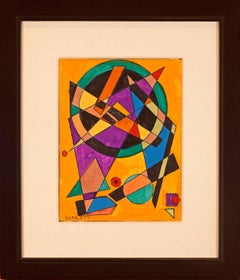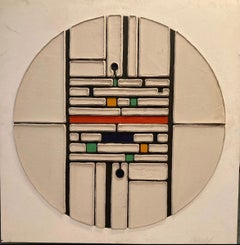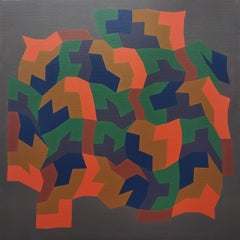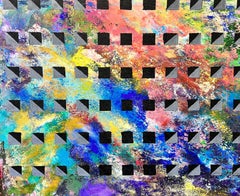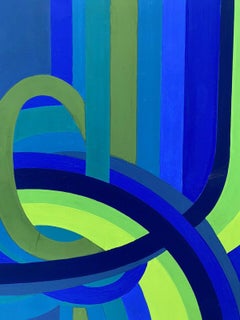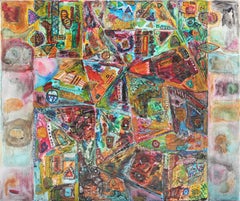Geometric Design Art Painting
20th Century Abstract Geometric Abstract Paintings
Paper, Gouache
20th Century Paintings
Oil
Early 2000s Abstract Expressionist Abstract Paintings
Canvas, Linen, Acrylic, Vinyl
1940s Abstract Geometric Abstract Paintings
Gouache
21st Century and Contemporary Abstract Abstract Paintings
Oil
1970s Pop Art Abstract Paintings
Oil
Late 20th Century Abstract Abstract Paintings
Gouache
Late 20th Century Abstract Figurative Paintings
Gouache
2010s Abstract Geometric Abstract Paintings
Canvas, Acrylic
2010s Abstract Geometric Abstract Paintings
Canvas, Acrylic
2010s Abstract Geometric Abstract Paintings
Canvas, Acrylic
2010s Abstract Geometric Abstract Paintings
Canvas, Acrylic
2010s Abstract Geometric Abstract Paintings
Canvas, Acrylic
2010s Abstract Geometric Abstract Paintings
Canvas, Acrylic
21st Century and Contemporary Contemporary Abstract Paintings
Paper, Gouache
2010s Abstract Geometric Abstract Paintings
Canvas, Acrylic
2010s Abstract Geometric Abstract Paintings
Canvas, Acrylic
2010s Abstract Geometric Abstract Paintings
Canvas, Acrylic
2010s Abstract Abstract Paintings
Canvas, Acrylic
21st Century and Contemporary Contemporary Abstract Paintings
Acrylic, Canvas
2010s Contemporary Abstract Paintings
Wood, Lacquer
2010s Contemporary Abstract Paintings
Wood, Acrylic
2010s Contemporary Abstract Paintings
Canvas, Acrylic
2010s Contemporary Abstract Paintings
Wood, Lacquer
2010s Contemporary Landscape Paintings
Canvas, Acrylic
2010s Contemporary Abstract Paintings
Oil
2010s Abstract Abstract Paintings
Canvas, Acrylic
Paul Reeves"Desert" Pastel Peach, Blue, and Gray Abstract Geometric Patterned Painting, 21st Century
2010s Contemporary Abstract Paintings
Canvas, Acrylic
21st Century and Contemporary Contemporary Abstract Paintings
Wood, Lacquer
1970s Modern Abstract Paintings
Canvas, Acrylic
1960s Modern Abstract Paintings
Canvas, Acrylic
2010s Abstract Abstract Paintings
Canvas, Acrylic
2010s Abstract Abstract Paintings
Canvas, Acrylic
2010s Contemporary Abstract Paintings
Canvas, Lacquer
2010s Abstract Abstract Paintings
Canvas, Acrylic
2010s Abstract Abstract Paintings
Canvas, Acrylic
2010s Contemporary Abstract Paintings
Canvas, Acrylic
2010s Abstract Geometric Abstract Paintings
Canvas, Acrylic
2010s Contemporary Abstract Paintings
Canvas, Acrylic
2010s Abstract Geometric Abstract Paintings
Wood, Pigment
1950s American Modern Abstract Drawings and Watercolors
Gouache, Graphite, Paper
2010s Contemporary Abstract Drawings and Watercolors
Paper, Acrylic, Pencil, Color Pencil
Early 20th Century Modern Abstract Drawings and Watercolors
Paper, Gouache
Early 20th Century Modern Abstract Drawings and Watercolors
Paper, Gouache
Early 20th Century Modern Abstract Drawings and Watercolors
Paper, Gouache
21st Century and Contemporary Abstract Geometric Abstract Paintings
Mixed Media, Oil
1940s Modern Abstract Drawings and Watercolors
Paper, Ink, Casein
20th Century Contemporary Mixed Media
Organic Material, Other Medium
20th Century Abstract Paintings
1940s Abstract Paintings
Gouache, Paper
1960s Abstract Expressionist Abstract Paintings
Canvas, Acrylic
2010s Abstract Geometric Abstract Paintings
Canvas, Acrylic
1960s American Modern Abstract Drawings and Watercolors
Paper, Ink, Acrylic, Gouache
2010s Abstract Geometric Abstract Paintings
Canvas, Acrylic
1980s Abstract Geometric Abstract Paintings
Oil
21st Century and Contemporary Abstract Geometric Abstract Paintings
Acrylic
21st Century and Contemporary Abstract Geometric Abstract Paintings
Acrylic
21st Century and Contemporary Abstract Geometric Abstract Paintings
Acrylic
- 1
